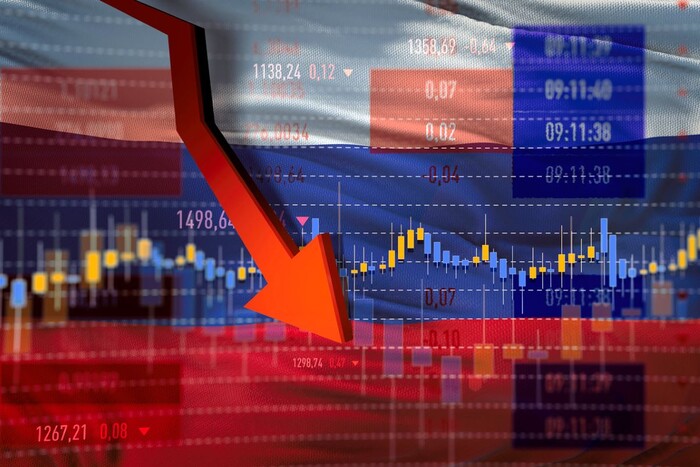- A decline in
industrial production, especially in civilian sectors not linked to
the defense industry.
- A slowdown in
consumer demand — retail trade is stagnating, and Russians are
increasingly forgoing large purchases.
- Persistently high inflation,
exceeding 9.2% since the
beginning of the year, while real household incomes remain under pressure.
- Fiscal consolidation
challenges — the state budget is facing a deficit despite high
export revenues from oil and gas, as spending on the military, social
support, and import substitution continues to grow.
Russia’s Economy Slips into Stagnation — Recession on the Horizon

The Russian economy is showing alarming signs of slowdown
and exhaustion of its previous growth model, which was based on mobilization
resources and military spending. This is stated in an analytical article published
by The Wall Street Journal,
citing macroeconomic data and expert assessments.
Key symptoms include:
The Central Bank of
Russia maintains a high key
interest rate of 16.5%, which curbs inflation but also limits private investment. Banks are
reluctant to lend, particularly outside the defense sector, and small and
medium-sized businesses continue to report a lack of accessible financing.
According to WSJ
experts, the Russian economy could enter a technical recession by autumn 2025, unless structural reforms and
an increase in private initiatives are undertaken. The report argues that the “war economy” model, which fueled
growth in 2022–2024 through defense contracts and infrastructure programs, has
run its course.
“Domestic consumption was supposed to replace lost external demand, but the population’s purchasing power hasn’t recovered after the COVID and sanctions shocks”,
says Natalia Orlova, an economist at the University of Economics and Politics in London.
“Russia is caught in a trap of high deficits and low business activity”, adds Michael Lerner, an analyst at WSJ.
Thus, while businesses
are hoping for a rate cut, the Central
Bank has not signaled any easing of its monetary policy. Pressure on the ruble is mounting:
demand for foreign currency is growing on the domestic market, and
international reserves are gradually declining. Fiscal and tax policy
adjustments may follow in the autumn — in the run-up to the 2026 elections.
Source: The Wall Street Journal
 Latest news
Latest news Latest news
Latest newsThe War Reaches the Caspian: Ukraine Strikes Russia’s Oil Infrastructure
12.Dec.2025
Georgia and the European Union: Transformation of Foreign Policy in the Context of European Integration
11.Dec.2025
Half of Azerbaijanis’ Income Goes to Food: Hidden Causes and Possible Consequences for the Economy
11.Dec.2025
Ukraine on the Threshold of a Political Shift: Updated Peace Plan and Zelensky’s Statement on Readiness for Elections
10.Dec.2025
Russia Proposes New Medal for Evacuating Bodies from Combat Zones
09.Dec.2025
The Shadow of Kadyrov in Yerevan: How a Woman Who Fled Violence Was Killed?
09.Dec.2025
Ukraine is Strengthening its Army amid a Growing Threat
08.Dec.2025
Ukraine Strengthens Its Army Amid Growing Threats
08.Dec.2025
Moscow and Beijing Conduct New Air-Defense Drills: What Lies Behind the Strengthening of Their Joint Shield?
07.Dec.2025
Russia–India: A New Architecture of Partnership. What Stands Behind Putin’s Visit to New Delhi?
06.Dec.2025

 16 Dec 2025
16 Dec 2025








